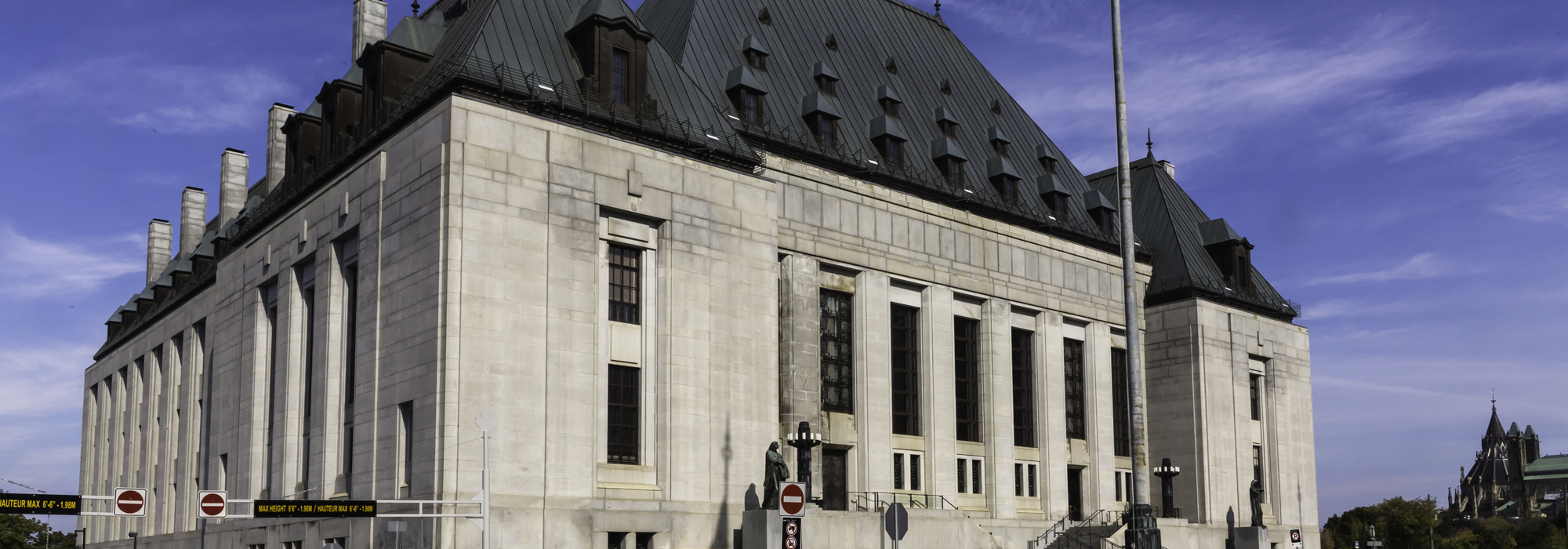
On June 24 and 26, the federal government announced a flurry of judicial appointments, the final trial-level appointments of the current mandate. Judicial appointments are announced via the Department of Justice website. (https://www.justice.gc.ca/eng/news-nouv/ja-nj.asp?tid=4) For the most part, they are painfully formulaic. They identify the new justice’s most recent professional experience, as well as the justice he or she will replace. Education, date and location of call, professional history, and a brief description of primary practice areas are usually included, along with a nod to professional activities such as membership in the Canadian Bar Association or teaching experience in bar admission courses. In short, they are a tedious and repetitive read, even for those who study judicial appointments.
The announcements of June 24 and 26 were different. While the boilerplate descriptions of the new justices remained, an entirely new generic and justificatory paragraph was appended to each regional announcement. It read: “Appointments to the country’s Superior Courts not only reflect the rich and diverse social fabric of our country, but also take into consideration the merit and legal excellence of each individual jurist. Through these appointments, the Government of Canada has demonstrated an awareness of the need to bring greater gender balance to the bench, to help ensure that the judiciary is more representative of Canadian society.” Somewhat astonishingly, the first appearance of this entirely unexpected claim was in the otherwise unexceptional announcements of two male appointments on June 24. On June 26, the statement was repeated, as part of a slew of 27 appointments, more than half of which were women. In this limited context, the assertion that the government was committed to “bringing gender balance to the bench” was almost believable. Unfortunately, nothing else in this government’s record of judicial appointment demonstrates “an awareness of the need” for diversity, gender balance, or representativeness (however construed).
In May of 2014, I concluded that the government’s record of judicial appointment displayed a “deliberate disregard” of diversity. (https://papers. ssrn.com/sol3/papers.cfm?abstract_id=2456792) The percentage of women on the bench is creeping upward at a glacial pace. It currently stands at 34.7 percent. (https://www.fja.gc.ca/appointments-nominations/judges-juges-eng.aspx) Six and a half years ago it stood at 31.4 percent. Currently, the Chief Actuary estimates that gender parity will be achieved in 20 years. (https://www.osfi-bsif.gc.ca/Eng/oca-bac/ar-ra/faj-jnf/Pages/faj-jnf14.aspx#Toc-1.) While the government’s unverifiable claim that the rate of appointment reflects the proportion of female applicants may suggest it is “aware” of gender, its record of appointments demonstrates an unwillingness to do anything concrete in response. (https://www.theglobeand mail.com/news/politics/appointments-of-female-judges-slump-under-harpers-tories/article4183464/) A “trickle-up” approach to the appointment of women is demonstrably insufficient. What is required is a concentrated effort to appoint women at a rate of, at a bare minimum, 50 percent. The exponential increase of women in the profession and the considerable pool of highly qualified women lawyers make even this minimal goal eminently achievable.
Perhaps even more troubling than the issue of gender on the bench are the larger questions of diversity and representativeness. My research led me to conclude that in the five years between 2009 and 2014, 3 of 191 federal appointees to a provincial superior court, where a determination of racialization could reliably be made, were not white. The Globe and Mail claimed that the two “nonwhite” appointments from 2009 to 2012 were Métis. (https://www.theglobeandmail.com/news/politics/of-100-new-federally-appointed-judges-98-are-white-globe-finds/article4101504/) I identified one racialized person, who the Minister of Justice has subsequently described as “Indo-Canadian,” appointed in 2013. This represents an appointment rate to provincial superior courts during that five year period of 1.04 percent for Aboriginal judges, and 0.5 percent for visible-minority judges. An initial evaluation of the 108 appointments made directly from the profession since May 2014 offers no evidence of an increased commitment to representativeness, despite the claim to the contrary.
These statistics are deeply troubling. Data from the 2011 Household Survey collected by Statistics Canada tells us that 19 percent of the Canadian population are visible minorities. The visible-minority population in large urban centres is significantly larger – with Vancouver at 45.2 percent and Toronto at 47 percent. The proportion of Aboriginal people in Canada is 4.3 percent. While the demographics of the profession do not match the demographics of the population, there is clear evidence that the profession is changing. Recent studies by the law societies in Ontario and British Columbia based on the 2006 Census suggest that approximately 1.5 percent of the profession is Aboriginal, and at least 12 percent is from visible minority communities. One does not need sophisticated statistical skills to comment on what is obvious. The demographics of federal judicial appointments have failed to keep pace with the changing demographics of the profession. And they have failed utterly to respond to the changing demographics of the population.
Why does diversity matter? There are, in my view, two primary arguments in favour of diversifying the bench. Both depend on the claim that judges, like all of us, are a product of their human experiences. Judging requires the virtually continuous exercise of discretion much more than the mechanistic application of predetermined and predictable rules. Even the Chief Justice has acknowledged that “a variety of subjective influences — our beliefs about the world and about human nature, our emotions, and our sense of justice — are inescapably part of judicial decision-making.” (https://www.scotland-judiciary.org.uk/Upload/Documents/JSCInauguralLectureJune2012.pdf). In other words, who the judge is matters to what they do.
The first argument in support of judicial diversity is utilitarian. Put simply, the more diverse the bench, the better the quality of judgment. Increasing the range of perspectives and experiences on the bench increases the likelihood of judgment that is truly impartial, that does not unintentionally replicate the perspectives and values of a limited subset of human experience. The second is rooted in the constitutional norm of antidiscrimination. The unrepresentative character of the judiciary demonstrates that the appointments process has disproportionately denied opportunities to indigenous peoples, racialized individuals, people with disabilities, women, and other members of equality-seeking groups. The institutional character of the bench reflects the ongoing existence of systemic discrimination. A standard response, one that has been offered by the current government, identifies the “pool problem” as primarily to blame. While it is true that the pool may offer a partial explanation for current statistics, passivity in the face of a stubbornly homogenous bench is no longer a constitutionally defensible response. At the very least, we need to give careful and critical attention to the appointments process and the ways in which “merit and legal excellence” are evaluated and applied. An important first step would be to collect data on the relevant characteristics of the applicant pool, a step that governments have consistently avoided. However, only informational transparency will allow the kinds of sophisticated remedial responses that the lack of diversity demands.
My mother, a transplanted Brit, was fond of reminding me that the proof was in the pudding. Saying something does not make it so, even when it is said on a Ministry of Justice website. The proof of a commitment to representativeness would be an increasingly representative judiciary that was appointed through a transparent process. In the absence of either of those pieces of evidence, the novel paragraphs accompanying the latest appointments are simply words.






